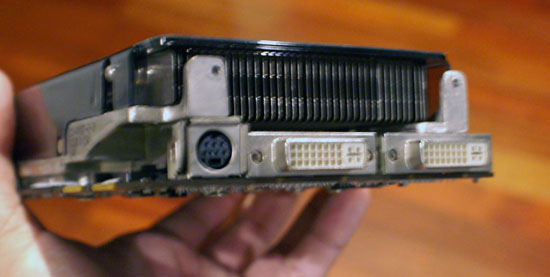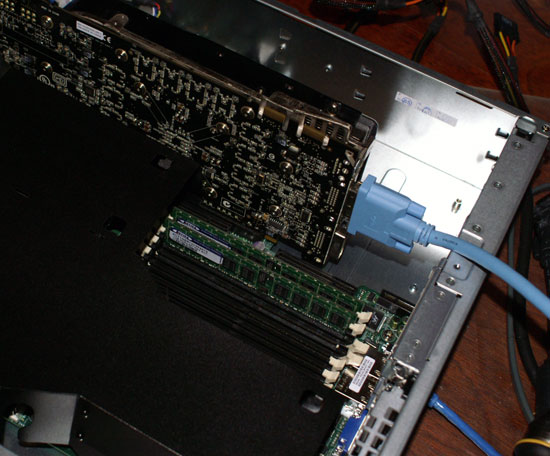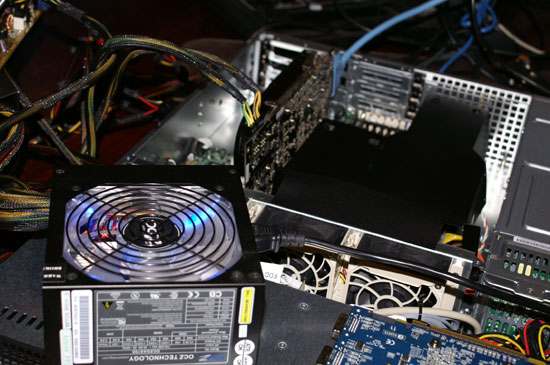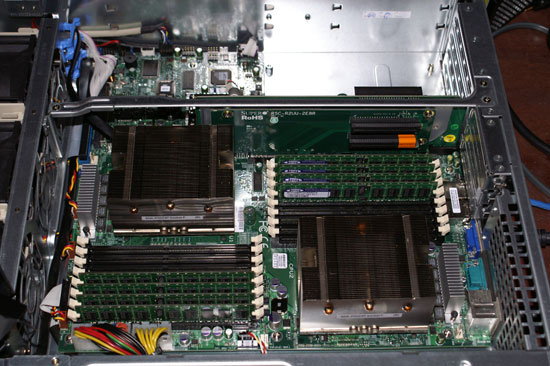AMD Phenom Preview: Barcelona Desktop Benchmarks
by Anand Lal Shimpi on September 10, 2007 12:03 AM EST- Posted in
- CPUs
The Methodology
We've been asking AMD for months now to let us benchmark Barcelona and Phenom, and for months we've gotten the same answer: not yet. When asked why, AMD would always give us some terrible lie about how it was for competitive reasons, but when we actually put our hands on Barcelona at Computex we realized that these chips were simply not ready.
The Barcelona launch is finally upon us and we've got to wait another 45 - 60 days before we'll be able to bring you a review of Phenom, well, not exactly. Back when the Opteron launched, AMD was in a very similar situation to the one it's in today; AMD needed K8 to remain competitive, and it had been delayed so much that we were beginning to wonder if AMD would ever get the chip out on time. When the K8 finally launched, it was server-only but we took one of those server-only motherboards and ran a bunch of desktop tests on it to predict forthcoming performance.
We cracked open the Barcelona server and made some modifications; while the on-board ATI ES1000 graphics is sufficient for use as a server, it'd be too limiting for our desktop benchmarks. Luckily the Supermicro motherboard in the system had a plethora of PCIe slots, we just needed to gain access to them.

The PCIe Riser we removed from the system
We pulled out the PCIe riser card which plugs into the motherboard's sole x16 slot and divides it into a pair of x8s, then we modified a GeForce 8800 GTX by removing the backplate cover so we could just stick it into the open server.

The modded 8800

The 8800 GTX installed, the server is not really intended to be used like this
The end result was, as Johan put it, us using "such a beautiful, noble machine for such plebian activities". We couldn't help it, while AMD has already contacted us about Phenom briefings, we couldn't wait that long to get an idea of what we can expect from AMD on the desktop.

We needed an external PSU to power the graphics card, the server didn't have any PCIe power connectors
Barcelona is currently limited to DDR2-667, we were unsuccessful with attempts to run the memory any faster. Like all other MP Opterons, Barcelona requires the use of registered DDR2 memory, which is inherently slower than the unbuffered stuff we use on desktops. Because of these limitations we refrained from running any comparative benchmarks to desktop Athlon 64 X2s, instead we chose to run a single quad-core Opteron in our server platform against a pair of dual-core Opterons to simulate Phenom vs. K8 on the desktop.

The Opteron server, 2 CPUs, 8 DDR2-667 DIMMs
Keep this in mind as you're looking at these results, at best all we're offering is an idea of, at a minimum, how much faster Phenom will be over an identically clocked Athlon 64 X2. As Phenom is a more data hungry CPU than its predecessor, it will rely more on having a faster memory subsystem so the performance improvement could be even greater when we measure it on the desktop. That being said, at least we can set expectations within some amount of reason by performing this investigation.










70 Comments
View All Comments
MadBoris - Wednesday, September 12, 2007 - link
Good catch, thx. Even though I said 'lower is better', I swapped it in my mind.So K10 looks much worse than K8 single core in that test.
I wonder where that penalty comes from and if it will pronounced in other apps.
Visual - Monday, September 10, 2007 - link
I have a question about RAM types. Are the slots different for normal unregistered DDR2, registered DDR2, and FBDIMM DDR2?If any of those are the same slots, what happens if you mess up and put the wrong type?
And I also have a suggestion for you Anand. Try testing with ASUS L1N64-SLI WS motherboard. It is originally for the QuadFX line of processors from AMD, but apparently the old K8 socket-f opterons work just fine in it, with unregistered DDR2. I assume the newer Barcelona opterons will too.
MadBoris - Monday, September 10, 2007 - link
Good preview Anand...Nice closing summary that put's it in a nutshell.
Too bad you couldn't drop a q6600 into that socket instead of just a k10 for a comparison that we all are looking forward to. ;)
Considering it isn't coming to desktop for a while, no biggie, it will be compared when it matters.
What is the huge deal in AMD not being able to get to high frequencies, I don't understand?
3ghz was in range many years ago for Intel, AMD still has difficulty getting parts out at 3Ghz. I lack the understanding if it's just manufacturing limits/costs or is it more due to their architecture limitations (interconnects and such).
This is the part that is really scarry. Intel who had profits in the 5bil range last quarter, can literally drive AMD into the ground by outpricing and outperforming them. Even if Intel decides to start losing money with a hugely aggressive price/performance ratio that is hard to pass up, AMD would not be able to withstand that onslaught for long...Question is does Intel have the blood lust to ring the death knoll once and for all and try to drive them into the ground. The saving grace here really is the high end server market with 2 and 4 socket configurations(8,16 cores) where Barcelona will stretch it's legs over Intel.
I hope for the best!
Cybercat - Monday, September 10, 2007 - link
Intel could do that, but they're not going to. AMD has to stay in business, because Intel can't afford to become a monopoly. However, Intel doesn't have a problem putting AMD on life support.It's a scary time for AMD.
MadBoris - Monday, September 10, 2007 - link
Hehe, good point. War of attrition. Break down their supply lines and lower their profits in such a way that they can't afford to do extensive R&D to innovate technology. Keeps them hobbling near by, but not as dangerously competitive.Intel can even make themselves "appear" more superior as a company by comparison to their runner up, and yet all the while they are innovating at the same pace they always were and not all that better, just have the appearance of greater superiority.
Sun TechTzu, the art of silicon business. ;)
Regs - Monday, September 10, 2007 - link
You might just shoot yourself in the foot if and when AMD brings out the Sledgehammer.leexgx - Monday, September 10, 2007 - link
thay did it was an K8 for 3 years but then Core2 came with its Sledgehammertaken AMD to long to bring there new cpu out
jones377 - Monday, September 10, 2007 - link
I compared the performance scaling between Barcelona and Core 2 Quad where Anandtech has run the same benchmarks. The C2Q results are taken from http://www.anandtech.com/cpuchipsets/intel/showdoc...">this review:The CPUs used are Barcelona @2GHz, @2.5GHz and Q6600@2.4Ghz, QX6850@3GHz. Both increasing the frequency by 25%. Only a few benchmarks were common between both. The gaming benchmarks for example were run at 1024*768 for Barcelona and 1600*1200 for C2Q so those can't be compared.
Barcelona 2GHz to 2.5GHz:
14.7% - Sysmark 2007
23.4% - WME
14.5% - iTunes
21.2% - 3dsmax R9 SPECapc
19.4% - Lightwave 3D
Q6600@2.4GHz to QX6850@3GHz:
15.2% - Sysmark 2007
23.7% - WME
21.5% - iTunes
23.5% - 3dsmax R9 SPECapc
21.3%/24.1% - Lightwave 3D - 2 different runs
It should be noted that QX6850 runs at a higher FSB than Q6600 but this can't be helped. It's the best numbers I could find.
MadBoris - Monday, September 10, 2007 - link
Interesting strictly from a CPU scaling perspective. It's good to consider them all as an average lump, as some of that code is likely "Intellified", like Itunes.I was hoping to see a bigger advantage in scaling due to the AMD architecture, scaling doesn't appear like it is going to be "too much" better over Intel though.
flyck - Monday, September 10, 2007 - link
you might want to consider that opteron had limited bandwith DDR2 667 for 4 cores which limits scaling and performance. For phenom we speak about DDR2 1024 without the registered latency.